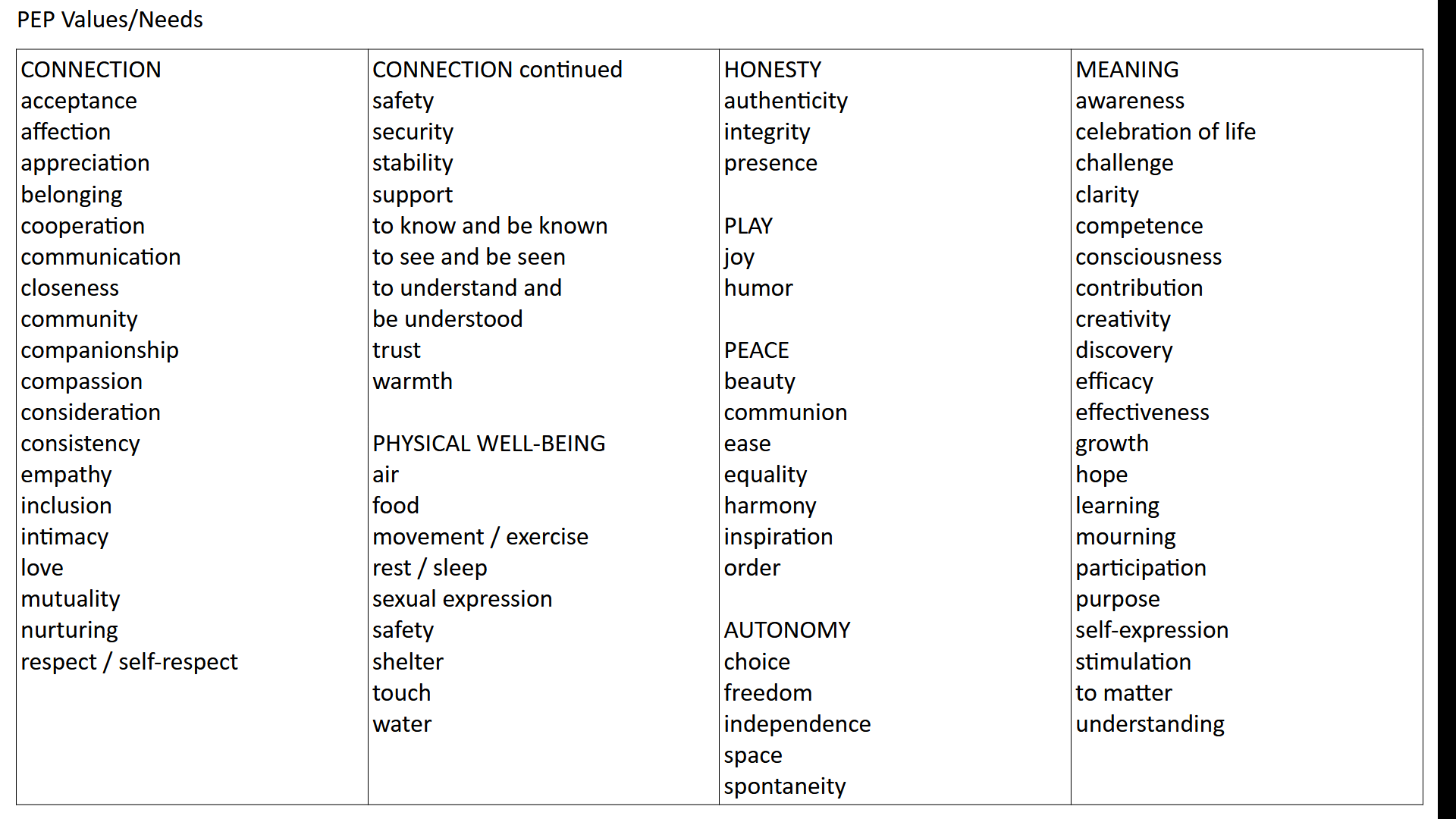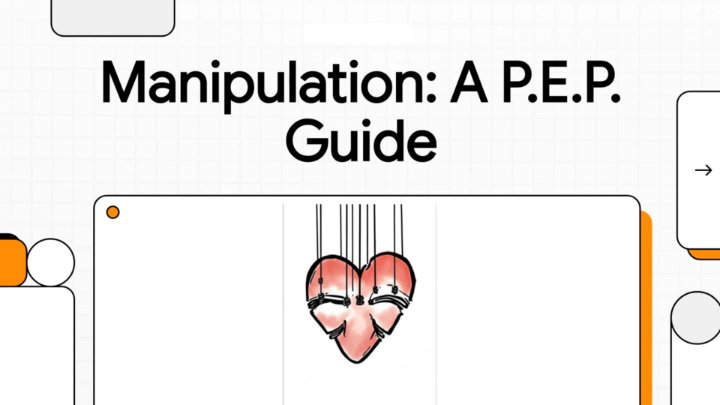AND a 14 minute 2-person talk on same: https://clearsay.net/wp-content/uploads/2025/08/ch22-Beyond_Manipulation.mp3
video created with the help of AI tools
Summary
Understanding and Addressing Manipulation in Practical Empathy Practice (P.E.P.)
This briefing document summarizes key themes and important ideas from Chapter 22, “Manipulation,” of “A Practical EmPath: Rewire Your Mind” by Scott Howard Swain. It focuses on the potential for misuse of P.E.P., strategies for recognizing and protecting against manipulation, and the core principles that distinguish genuine empathy from manipulative tactics.
1. Introduction to P.E.P. and its Intentions
Practical Empathy Practice (P.E.P.) is a communication framework designed for self and others with primary goals including:
- Liberation
- Understanding
- Strengthening Connection
- Increasing Responsibility
- Displaying Clarity
- Empowering Self and Others
A foundational rule of P.E.P. is the understanding that “we do not ‘make’ anyone feel anything. We may stimulate a feeling but then it is the person’s choice how they process what was said.” This emphasizes personal responsibility for emotional responses.
The three core components of P.E.P. are:
- Observation without evaluation: Focusing on their words, with subconscious processing of body language.
- Feeling: Recognizing one’s own feelings and guessing at those of others.
- Values/needs/motives/wants: Guessing at one’s own and others’.
2. The Uncomfortable Truth: P.E.P. and Manipulation
Initially, the author rejected the idea that systems like NVC (a precursor to P.E.P.) could be used for manipulation, citing principles such as “A deep part of NVC – an underlying principle – is that we do not want people to do a thing unless they 100% want to do it.” and that “when we blame, shame, guilt, evaluate, demand, threaten, or otherwise attempt to coerce a person into doing what we want them to do, later we will pay a price.”
However, through personal experience and observation, the author came to the crucial realization that P.E.P., like any tool, can be used for manipulation. This misuse can occur “subconsciously or accidentally all the time when they are in the early process of understanding and integrating the various parts of P.E.P.” This is particularly true for individuals “raised – like many of us were – in a ‘domination culture,’ to still have strategies of blame, shame, evaluate, demand, and guilt underlying rough approximations of the P.E.P. speaking model.”
A critical self-reflection question is posed: “Why do I want this? Am I wishing to understand the other person or to change them?” This question serves as a litmus test for intent.
3. “Needs” Can Sound Needy (and Manipulative)
One specific aspect of P.E.P. that can be easily misinterpreted and used manipulatively is the “needs” vocabulary, especially when confused with “actions (or strategies).”
- Example of Misuse: “I really need you to cook dinner.” This statement is deemed manipulative because “cooking dinner is a strategy or action to get a need or value met.”
- Accurate P.E.P. Usage: “I’m hungry and tired. Are you up for cooking?” This phrasing ensures that “our request is not a demand” and that “we only want them to cook if they get their needs met by doing so.”
- Terminology Concerns: The author notes that calling them “needs” can have “too many connotations that are not fully in line with the NVC and P.E.P. principles of consent and responsibility.” Alternative terms like “wants, desires, or even values” are suggested as potentially more accurate.
4. P.E.P.’s Built-In “Anti-Manipulation” Mechanisms
Despite the potential for misuse, P.E.P. and NVC contain significant “anti-manipulation” features:
- (1) Letting Go of Agenda: Deep integration of P.E.P. leads to less desire to control outcomes and a greater willingness to “fully see the other person’s view.” Empathy, with practice, becomes easier and more beneficial than controlling outcomes, which carries “energy expenditure, added responsibility, worry,” and negative effects on the controlled person.
- (2) Consensus Over Compromise: P.E.P. seeks for “both / all parties to get their needs met.” Coercing someone into an action that doesn’t serve their needs is contrary to the spirit of P.E.P., as “When we push people to do something that doesn’t meet their needs, we both pay the price.”
- (3) Responsibility for One’s Own Feelings: P.E.P. asserts that “we are responsible for our own feelings” and discourages blaming others for emotions. Instead of “Your words made me feel angry,” the empathetic phrasing is “When I heard you say that, I felt angry.” The principle is that “No one can make us happy or angry without our permission.”
- (4) Clear Distinction Between Request and Demand: The fourth component of P.E.P. (Observation – Feeling – Need – Request) emphasizes making clear requests, not demands. The goal is for the other person to “do the thing only if they really want to.” Practitioners strive to become “sensitive to the ‘maybe’ or ‘no’ that body language may reveal when someone says ‘yes’ for ‘unclean’ reasons.” The aim is always for a “real’ yes.”
- (5) Intuition: Truth Detection: P.E.P. can “fine tune our senses to more easily pick up on whether trust is warranted for a person or situation.”
5. Recognizing and Responding to Manipulative P.E.P. (Conversations)
The provided conversations illustrate how P.E.P. can be used manipulatively or misinterpreted, and how to respond with genuine empathy.
- Manipulative Use (e.g., Jake and Mia, Linda and Eric): Manipulators often use P.E.P.-like language to create obligation, guilt, or appeal to a person’s values in a way that serves their own agenda without genuine concern for the other’s needs.
- Tactics: Implied obligation (“I need you to stay late… It’s important for our team’s success.”), appealing to a person’s self-perception (“I know how much you value being a team player,” “You always talk about being helpful,” “I know you wouldn’t want to let a friend down”), promising rewards (“But think of the appreciation you’ll get from everyone.”).
- Empathetic Response: Acknowledging the other person’s stated values while clearly articulating one’s own feelings and boundaries. For example, Mia: “It seems like there’s an expectation for me to sacrifice my personal time.” Eric: “I value kindness, but also my boundaries and autonomy.”
- Misinterpreted P.E.P. (e.g., Sarah and Brian, Derek and Anna): Genuine empathetic attempts can be perceived as manipulative, especially if the recipient is sensitive or accustomed to domination culture.
- Misinterpretation: Sarah fearing she’s “imposing” or “manipulative,” Anna feeling “accused” or “micromanaged.”
- Clarification of Intent: The empathetic speaker clarifies their intention is “to understand and support, not to blame” or “to offer support, not to control,” emphasizing collaboration and mutual understanding.
6. Exercises for Practice and Reflection
The chapter concludes with exercises designed to foster a deeper understanding of manipulation within communication and to strengthen P.E.P. skills for both identifying and avoiding it. These exercises focus on:
- Reflecting on past manipulative experiences.
- Practicing responses to perceived manipulation.
- Clarifying intentions when one’s own P.E.P. is misinterpreted.
- Constructing non-manipulative requests.
- Developing scripts for common communication breakdowns.
- Role-playing scenarios of both manipulative and anti-manipulative P.E.P. usage.
Conclusion
The core takeaway is that while P.E.P. is a powerful tool for connection and understanding, its effectiveness and ethical application hinge on genuine intent. Practitioners must constantly self-reflect on their motivations, distinguish between needs and strategies, make clear requests rather than demands, and take responsibility for their own feelings. By adhering to its foundational principles, P.E.P. serves as a robust defense against manipulation, promoting authentic connection and mutual well-being.
The full values / needs list:











Recent Comments